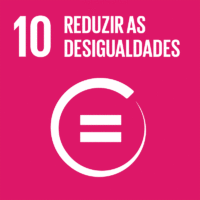Ciência_Iscte
Publicações
Descrição Detalhada da Publicação
Feasibility, appropriateness and meaningfulness analysis of the Sunfrail Tool to the European Portuguese population during cross-cultural adaptation process
Título Revista
International Journal of Evidence-Based Healthcare
Ano (publicação definitiva)
2019
Língua
Inglês
País
Estados Unidos da América
Mais Informação
Web of Science®
Scopus
Google Scholar
Esta publicação não está indexada no Overton
Abstract/Resumo
Frailty is an age-related condition characterized by increased vulnerability to negative outcomes. To enable informed decision-making and implementation of individually tailored practices for frailty management, it is necessary to develop screening tools that cover different domains of individual functioning, reliably predict future adverse outcomes and are generalizable to healthcare settings other than primary care. The Sunfrail Tool, an easy-to-use nine-item instrument, seems to meet all these requirements. The current study aimed to perform a cross-cultural adaptation of the Sunfrail Tool for the European Portuguese population and to perform the feasibility, appropriateness and meaningfulness analyses of the Sunfrail Tool Portuguese version.
Methods: The process of cross-cultural adaptation was conducted in four-phases (translation, synthesis, back
translation and creation of consensual version). To reinforce the content validity, the additional analysis on feasibility, appropriateness and meaningfulness were conducted with end-users (older adults, informal caregivers and health and social care professionals).
Results: The frailty concept was considered suitable for the European Portuguese population. A consensus version was reached by an expert panel after considering the results of two forward and two back-translations. This prefinal version was endorsed to the first author of the original version of the instrument, as recommended by international guidelines. The content validation performed by healthcare professionals (n ¼ 7), patients (n ¼ 18) and informal caregivers (n ¼ 3) showed that the Sunfrail Tool was moderately comprehensible and ambiguous. Five items required changes for cultural adaptation.
Conclusion: The Sunfrail Tool seems to be a promising instrument for the early identification of frailty to be used in the European Portuguese context to inform clinical decisions on preventive responses. However, to enable identification of frail and nonfrail individuals with this tool and ensure effectiveness on pathways activation for frailty management, there is a need to define cut-off points. Guidelines supporting the interview process are also desirable.
Agradecimentos/Acknowledgements
The authors gratefully acknowledge the support of the Health Sciences Research Unit: Nursing (UICISA: E) hosted by the Nursing School of Coimbra (ESEnfC), and the Foundation for Science and Technology (FCT).
Palavras-chave
Cross-cultural adaptation,Frailty,Screening tool
Classificação Fields of Science and Technology
- Ciências da Saúde - Ciências Médicas
- Psicologia - Ciências Sociais
Contribuições para os Objetivos do Desenvolvimento Sustentável das Nações Unidas
Com o objetivo de aumentar a investigação direcionada para o cumprimento dos Objetivos do Desenvolvimento Sustentável para 2030 das Nações Unidas, é disponibilizada no Ciência_Iscte a possibilidade de associação, quando aplicável, dos artigos científicos aos Objetivos do Desenvolvimento Sustentável. Estes são os Objetivos do Desenvolvimento Sustentável identificados pelo(s) autor(es) para esta publicação. Para uma informação detalhada dos Objetivos do Desenvolvimento Sustentável, clique aqui.

 English
English



